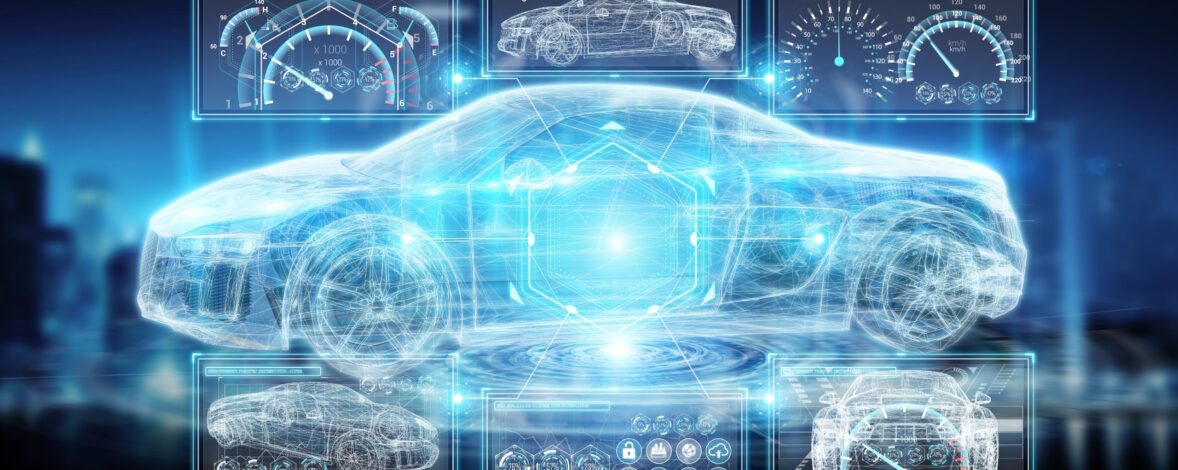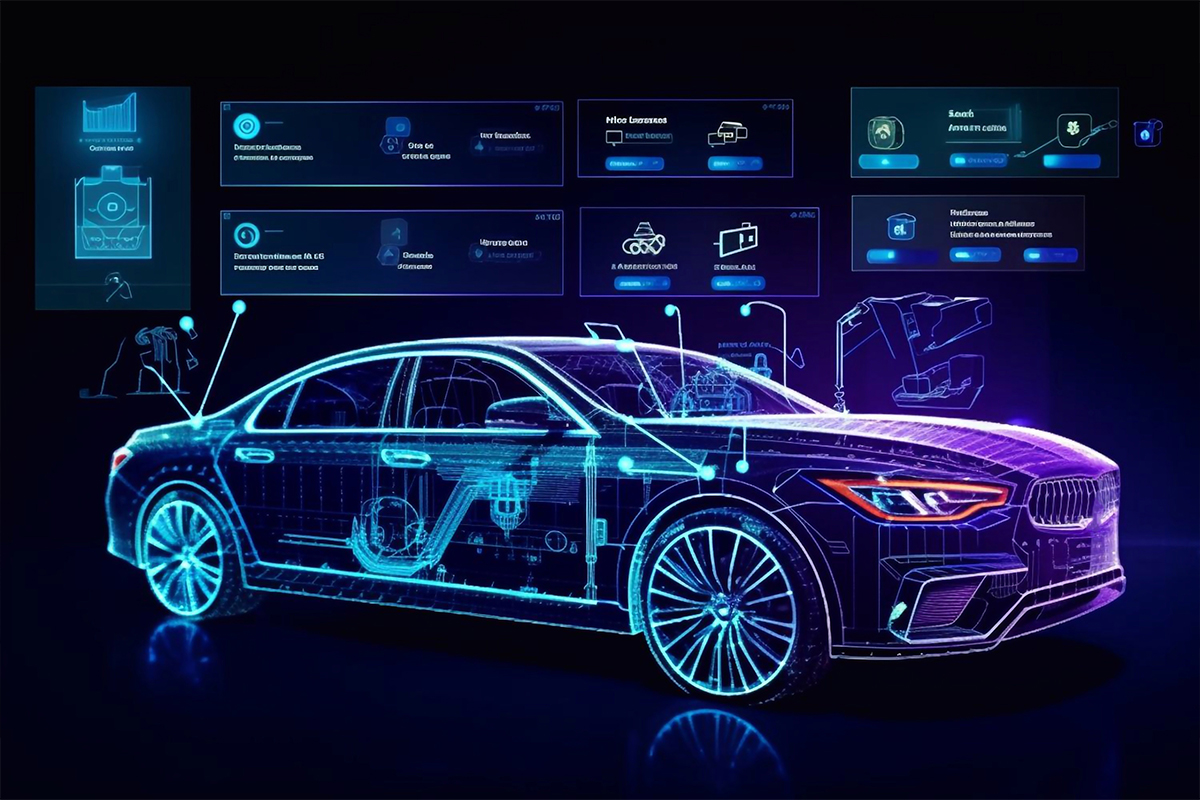The collaborative union between the automotive and tech industries is booming. Our digital world is not only rapidly changing how we do business and interact with partners and customers, but it is also re-defining what an automobile needs to be. Software-defined vehicles (SDVs) present an opportunity for these two industries to come together and collaborate for the future, but despite prevailing knowledge of connected mobility, the core definition of the SDV remains undefined. Software-defined technologies rose out of the data center space, and the Sonatus teams’ long term and diverse experience, having built a lot of this technology, helps to inform our holistic perspective on the SDV.
Software-defined vehicles are defined by having a dynamic infrastructure that allows automakers to embrace data-driven innovation by enabling them to monitor, analyze, control, and automate them in real-time. This is key to realizing the promises of SDVs, from reduced product recalls to enabling new business models, to features and functionality that evolve over a vehicle’s lifetime. We have a powerful narrative to add to the industry’s story here at Sonatus, and it’s time for us to share.
+++
Auto Tech Week 2021 brought together industry leaders and pioneers in the automotive tech space to discuss the transformation and disruption shaping the industry today. Luca De Ambroggi, Senior Principal Analyst of the Automotive Electronics Ecosystem with Wards Intelligence, sat down with Sonatus CEO, Jeff Chou, in the first Software-Defined Vehicle track at Auto Tech Week to delve deeper into the importance of unlocking the dynamic potential of software-defined vehicles.
The two had an insightful conversation, discussing everything from the foundation of a software-defined vehicle, to the battles of OTA updates, to codependencies between hardware and software, and the shifts in community alliances as the mobility industry pivots to a new era of technological innovation. In case you were not able to stream or attend the panel in person, here are the highlights from Jeff and Luca during their session on “Architecting Software-Defined Vehicles to Unlock Their Full Dynamic Potential.”
STEPPING BACK: THE SOFTWARE-DEFINED VEHICLE AND ITS ORIGIN
“What is a software-defined vehicle?” – Luca
“SDVs are more than just OTA software updates or products running hundreds of millions of lines of code.” – Jeff
With software-defined vehicles quickly becoming the buzz of the automotive industry, individuals are hiring more resources to develop software-integrated products powered by hundreds of millions of lines of code. Some believe that the software will define the hardware architecture of the vehicle, while others base their idea of software-defined in OTA updates. All of these definitions are valid to some extent, but we believe we can be more precise and ambitious with the core definition of software-defined vehicles.
The term software-defined rose out of the data center in the early 2000s. It is a different product in a different industry, but the forces that drove this innovation are the same in automotive.
“I need to go faster, and it needs to be done cheaper.” – Jeff
These forces are in both the data center and automotive, and they are growing in necessity. But now, companies are realizing that data should not simply get faster, it needs to be in real-time. It’s crucial for businesses to invest in real-time data analytics and updates in order to remove human error and lagging reactivity. By doing so , they can help to combat one of the biggest relevant challenges as the world transitions to a digital framework.
TRANSFORMING DATA ANALYTICS TO REAL-TIME INNOVATION
In order to maximize real-time analytics, we must take into consideration the four key stages of successful in-vehicle software. Firstly, the device has to be visible, meaning there must be seamless methods to collect data from its sources. After collecting the data, companies must be able to critically analyze key takeaways, allowing them to learn from what they are monitoring, and what the driver and vehicle experiences. Without this insight, it’s difficult to derive areas for improvement, and the model becomes outdated and potentially dangerous to passengers inside and outside of the vehicle. Next, businesses must take action; Real-time analytics empower automakers and tech innovators to make instantaneous decisions such as adding a new feature to the vehicle to fix a bug or enhance the driving experience. And lastly, businesses come full circle to automating these responses to help improve the software and drive the feedback loop of successful in-vehicle software integrations.
This has nothing to do with autonomous driving, but rather automated data collection systems, which help reduce the time it takes to make adjustments and remove lagging human intervention. For example, your home can be automated, but it is not autonomous. A software-defined infrastructure in the cloud is automated, but not autonomous. Autonomous vehicles just focus on one element, driving. Software-defined vehicles interact with automation in areas like recall prevention, security analysis and data protection, as well as new features with a push of a button without needing to introduce new software via OTA updates.
OTA is a small piece of the puzzle, one of the four components highlighted above. It does not have the capability to monitor, collect, or analyze data. Additionally, there is no automation since human intervention is required to push these software updates over-the-air. It is a great first step, but it is like rebooting your laptop. This has been here for the last 20 years, it is not a software-defined laptop. Our perspective is that a software-defined vehicle is something you can monitor, analyze, control, and automate in real-time without human intervention.
FROM HARDWARE-DEFINED TO SOFTWARE-DEFINED:
“How do you see the need for an infrastructure for storage, data, and software? And do you think the software-defined vehicle will have a dependency on hardware?” – Luca
“Software and hardware architectures should be decoupled.” – Jeff
It all starts with infrastructure; infrastructure is the foundation of your house, and In the data center world, “the network is the computer.” This means everything is based on communication, protocols, services, how functions talk to one another and how data is moved from one place to another. Once you have this foundation, it is everywhere, and you can build the services on top of this flexible vehicle software architecture. OEMs need to put effective infrastructure in place in order to activate the effectiveness of highly concentrated real-time analytics.
Everyone is looking at next generation hardware architectures. Hardware specialists take a strategic approach and divide the vehicle into zones – but a software-defined vehicle cannot be broken down to wires, but rather actuators. The software infrastructure that sits on top of these hardware systems should be orthogonal. There is a physical plane that represents zones, ECUs, and functional controls. Then there is a control plane, which is synonymous to a government or laws of the road. The roadmap for hardware innovation is long with lots of opportunities, and so is software, and these entities should be decoupled to best maximize their individual advancements.
TAKE A PAGE FROM HISTORY: DISRUPTION AND FRICTION
“Is there a common vision and API in this industry? Or is there friction?” – Luca
“Whenever you have industry disruption, there will be friction because every partner and OEM wants to build it themselves.” – Jeff
As the technology and its industry matures, and you have solutions proven to work, then things will bleed into standards and open service-oriented architecture over time. Standards need more movement, and time to develop to a point where they flourish. At the end of the day, software will be standardized in the industry and will level off to standardization, as we have seen in prior moments in the industry.
CONCLUDING REMARKS
There are many alliances and companies forming factions across the industry looking to define new standards and solutions. These will come together because of economics and time to market, and to be able to leverage best practices and holistic learning. This process will take many years, but it will prove to be beneficial for technological advancements and the industry as a whole because once you start settling on a few standards, then you can leverage new innovations instead of reinventing the wheel.
View the Sonatus Vehicle Platform
ABOUT SONATUS
Sonatus is accelerating vehicle software innovation and the transition towards software-defined vehicles. Our platforms and products serve as the key building blocks that allow automotive companies and their ecosystem to innovate faster and deliver continuous improvements in costs, capabilities, reliability, and user experience over the vehicle lifespan. Sonatus’ award-winning software platform is in mass production vehicles from Hyundai, Kia, and Genesis today and will grow to millions of cars by 2024. The company has raised more than $110 million USD with world-class automotive, technology, and venture investors including Foxconn, Hyundai Motor Group’s Kia Corporation, LG Electronics, Marvell, SAIC Capital, Translink Capital, UMC Capital, and Wanxiang Group Company. Sonatus is headquartered in Sunnyvale, CA (Silicon Valley), with offices in Paris, Shanghai, Seoul and Tokyo. Sonatus is a trademark of Sonatus, Inc. For more information visit www.sonatus.com.

